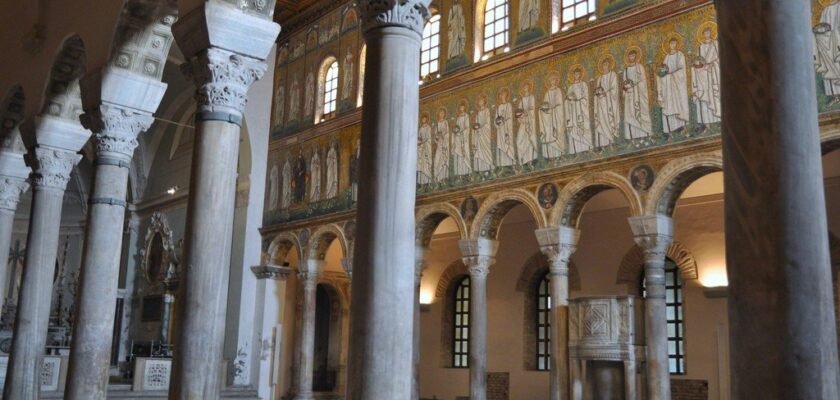Sant’Apollinare Nuovo
Sant’Apollinare Nuovo is a beautiful early Christian basilica preserved in the Italian city of Ravenna. The church was built in the 5th and 6th centuries, when the city was the capital of the Ostgothic kingdom, and has been listed as a UNESCO World Heritage Site since 1996.”
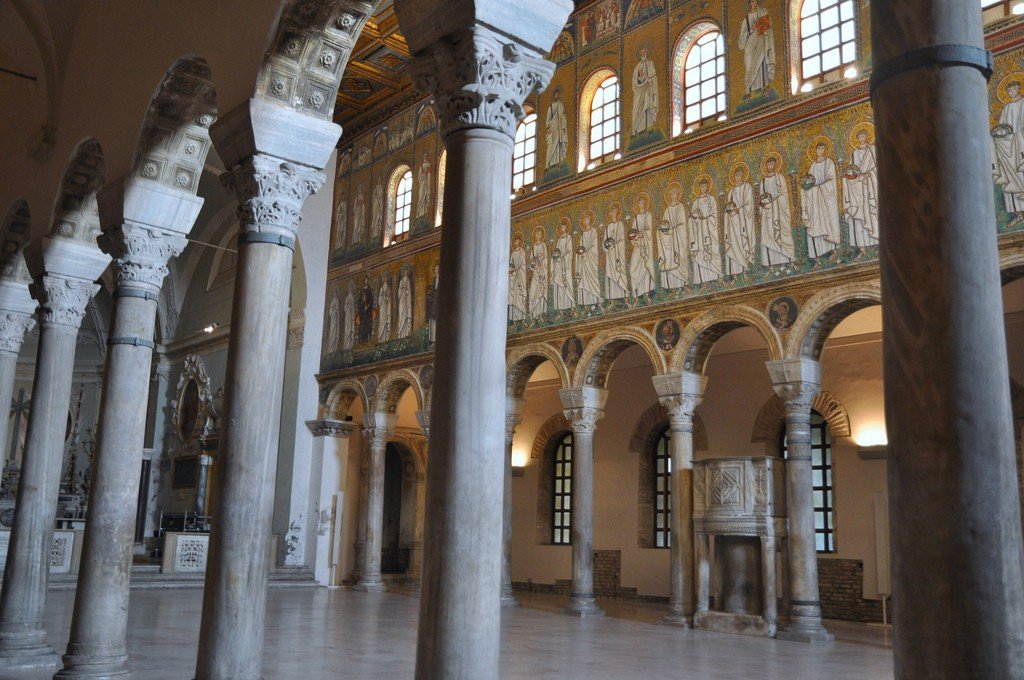
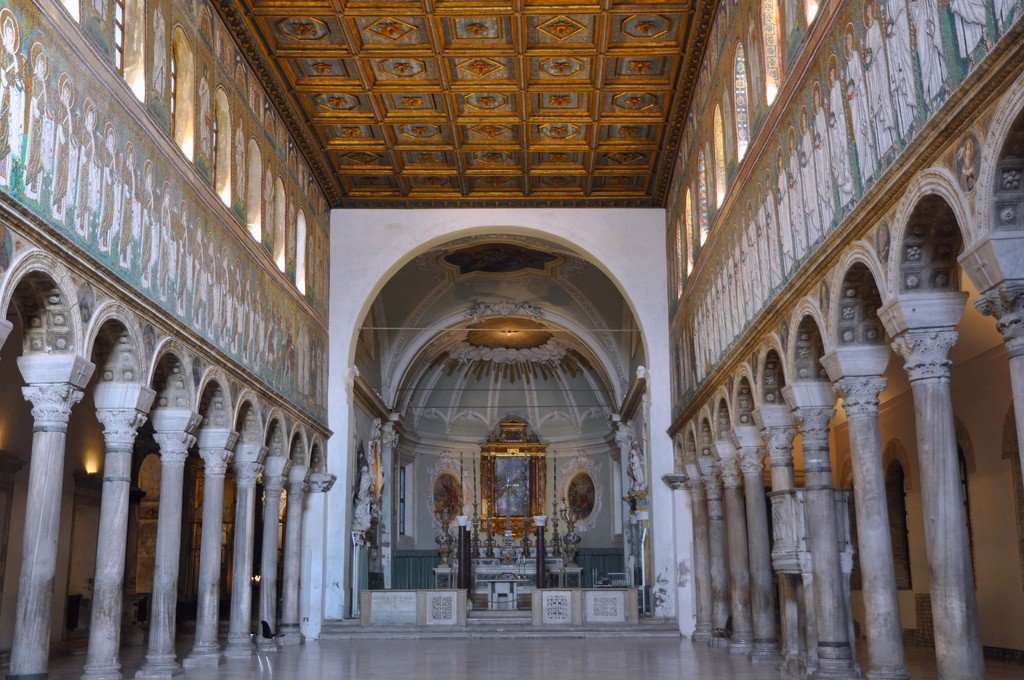
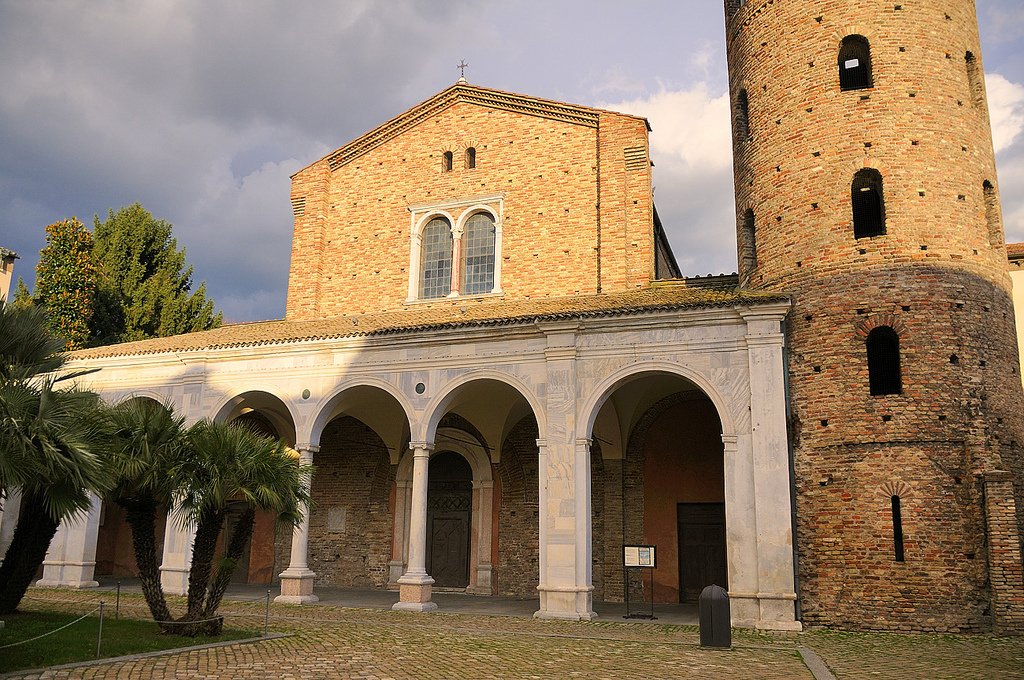
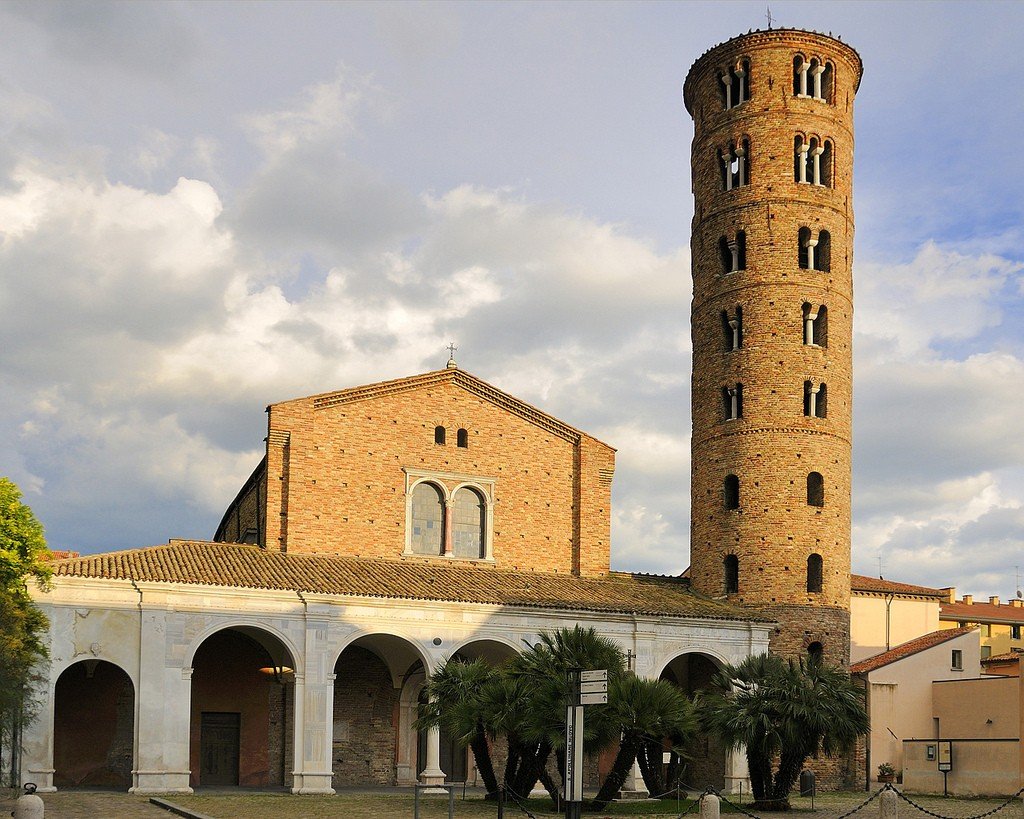
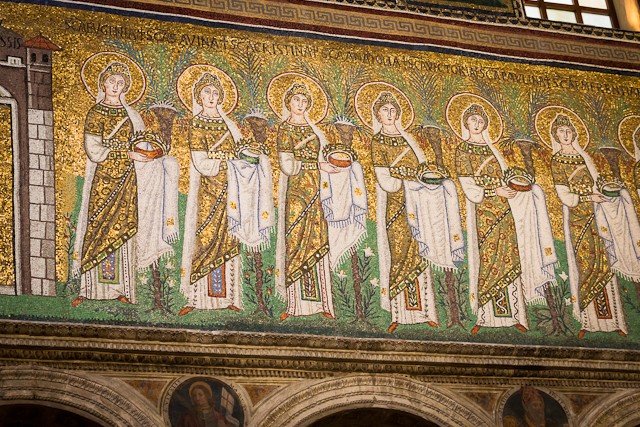
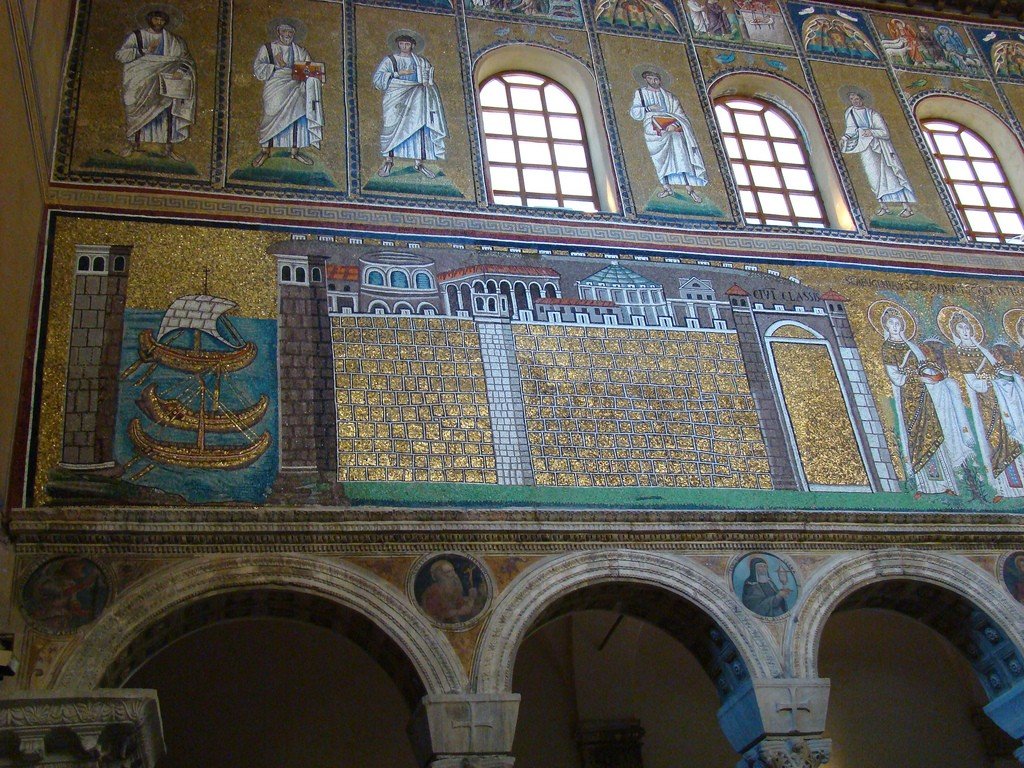
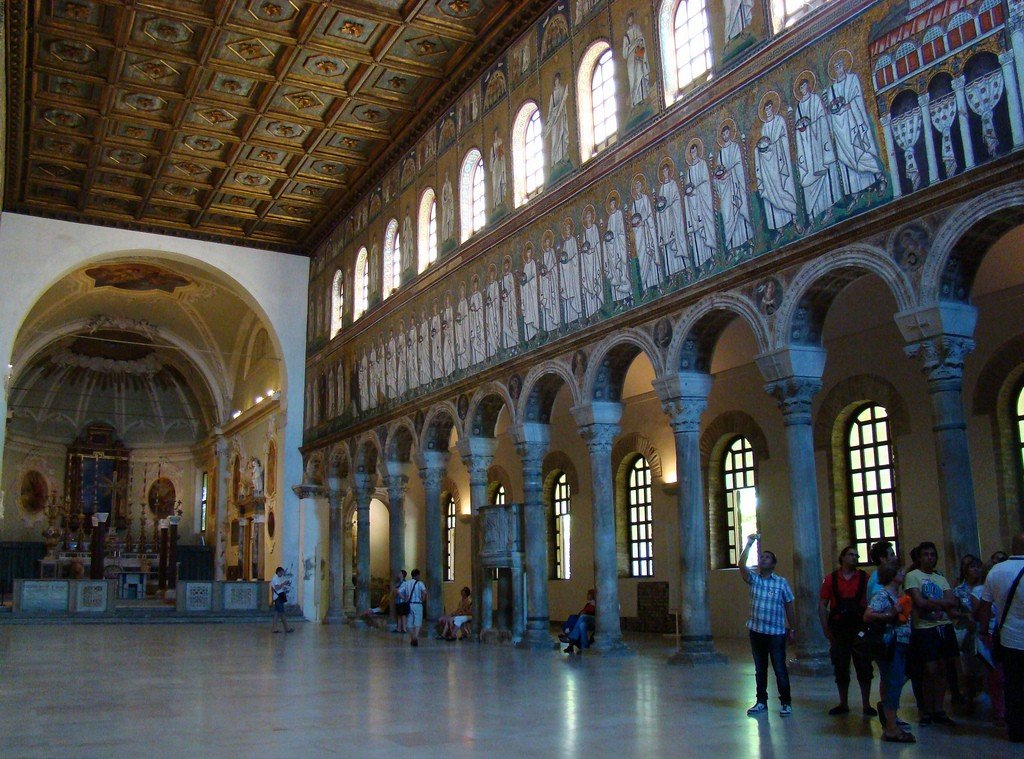
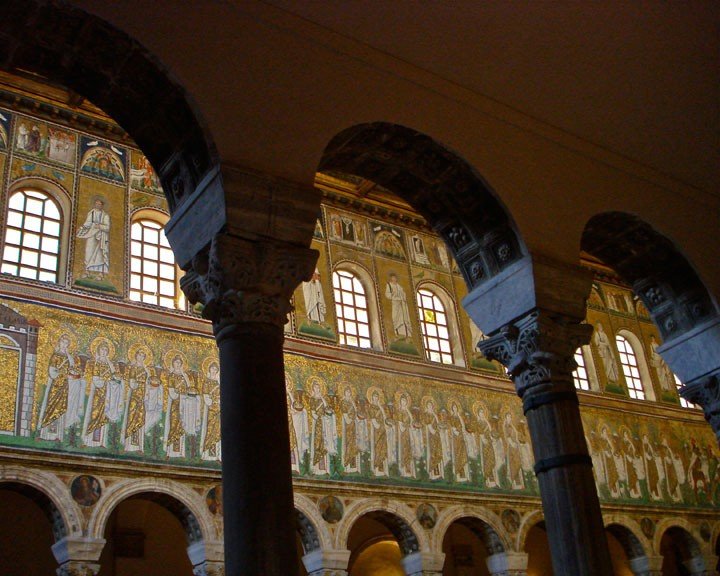
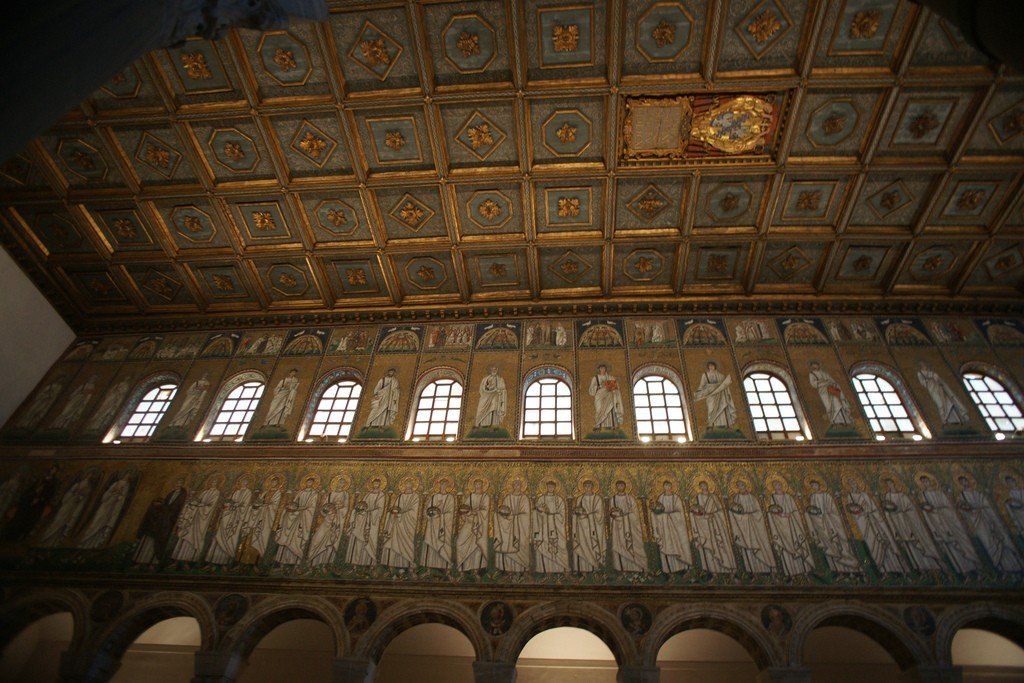
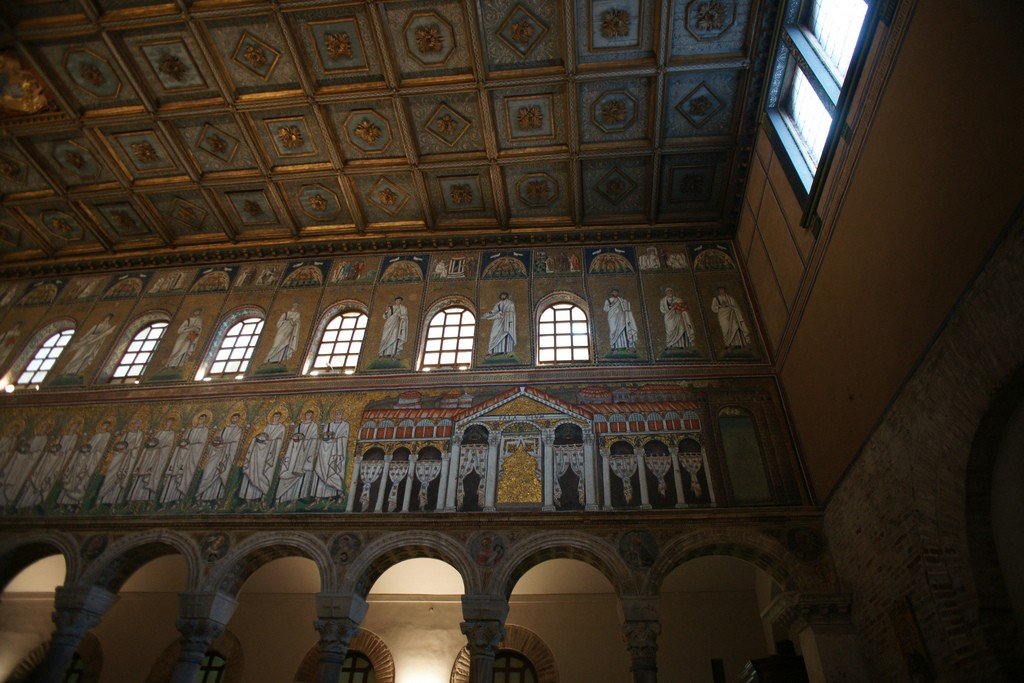
Video: Sant’Apollinare Nuovo
Highlights
The Basilica of Sant’Apollinare Nuovo is very popular with tourists. Travelers from different parts of Italy and foreign countries come here to see the perfectly preserved Byzantine mosaics from the 5th to 6th centuries. Some of them were created during the reign of the Ostgothic king Theodoric the Great, while others were created under Byzantine Emperor Justinian I.
.The mosaics are placed in three tiers. The oldest subjects in Sant’Apollinare Nuovo are dedicated to the thirteen scenes of miracles described in the New Testament, as well as the thirteen scenes of the Passion of Christ. These mosaics show a view of the port of Classe. Despite the obvious differences in technique, experts believe that all the mosaics were made at the same time, but by different masters. In the XIX century restorers at their discretion signed the ancient mosaic images and in some places made mistakes. According to modern researchers, the mosaic signed “Justinian” actually depicts King Theodoric of the Ostgoths.
.
Later mosaic scenes, made during the reign of Emperor Justinian I, are on the walls of the central nave. They depict processions of Christian martyrs and virgins. It is noteworthy that all the saints in these mosaics are dressed in white robes, which emphasizes their holiness.
For visitors, the doors of the Basilica of Sant’Apollinare Nuovo are open: in November-February – from 10.00 to 17.00, in October and March – from 9.30 to 17.30, and in April-September – from 9.00 to 19.00.
.History of the temple
Sant’Apollinare Nuovo was built from 493 to 526 as the palace basilica of the ruler of the Ostgothic kingdom, Theodoric. The temple was originally dedicated to Christ the Savior. It stood next to the royal palace, the ruins of which were found during archaeological excavations carried out early last century.
.After Ravenna was conquered by Justinian I, all the temples in the city were given to the Orthodox. In 561, the basilica was dedicated to St. Martin, the Bishop of Tours, revered by the faithful. At the same time, part of the mosaics of the temple on the instructions of Pope Gregory the Great blackened and laid, and on the vacated walls laid new ones. The reason for this was the desire of Justinian I to destroy the memory of the former rulers of the Italian city.
.
The temple received its modern name in the IX century, after the dedication to St. Appolinarium, who was the high priest of Ravenna. This happened in 856, when his relics were transferred here from the church of Sant’Apollinare in Classe. The word “Nuovo” in the name of the church means “new”. In the mid-18th century the relics were returned to their original place, but the “new” church retained both the name and the dedication.
.
In the IX-X centuries, a tall bell tower building was added to the church, and in the XVI century – a picturesque portico of marble. At the same time, groundwater rose, and the church floor had to be raised by 1.2 meters. After the reconstruction, most of the original floor mosaics, laid in Byzantine times, were irretrievably lost. In the XVII century there was another large-scale remodeling – the old ceiling of the basilica was replaced by a coffered ceiling.
.
Features of architecture and interiors
The Basilica of Sant’Apollinare Nuovo and its interiors have not changed much since it was built. The architecture of this church is reminiscent of other Ostgothic and Lombard temples. The three-aisled brick basilica measures 42 by 21 meters. Inside it is divided by rows of Corinthian columns. Marble columns stand far apart, so it seems that the side aisles have a single space with the central, the most voluminous part of the basilica.
.The walls of the temple are divided by pilasters and picturesque double windows, and its facade is decorated with a neat marble portico. The bell-tower is similar to the other Campaniles of Ravennes. It is cylindrical in shape and rises to a height of 38 meters.
.Since the 18th century, there have been 8 chapels inside the church of Sant’Apollinare Nuovo. The chapel next to the main altar houses a statue of St. Anthony of Padua, which is periodically used for church processions. Another chapel is dedicated to the memory of soldiers who fell during the First World War. It is decorated with frescoes and memorial plaques on which are carved the names of soldiers and officers who did not return from the battlefields.
.
In addition to the mosaics, several carved decorative elements have survived from the original basilica. These are the stone-carved shadow and throne, the Byzantine pulpit, as well as the Christian cross, peacock and vine on the barrier near the throne..How to get there
Sant’Apollinare Nuovo is located in Ravenna, at Via di Roma, 53. It is a 5-minute walk from the city’s train station to the basilica.
>